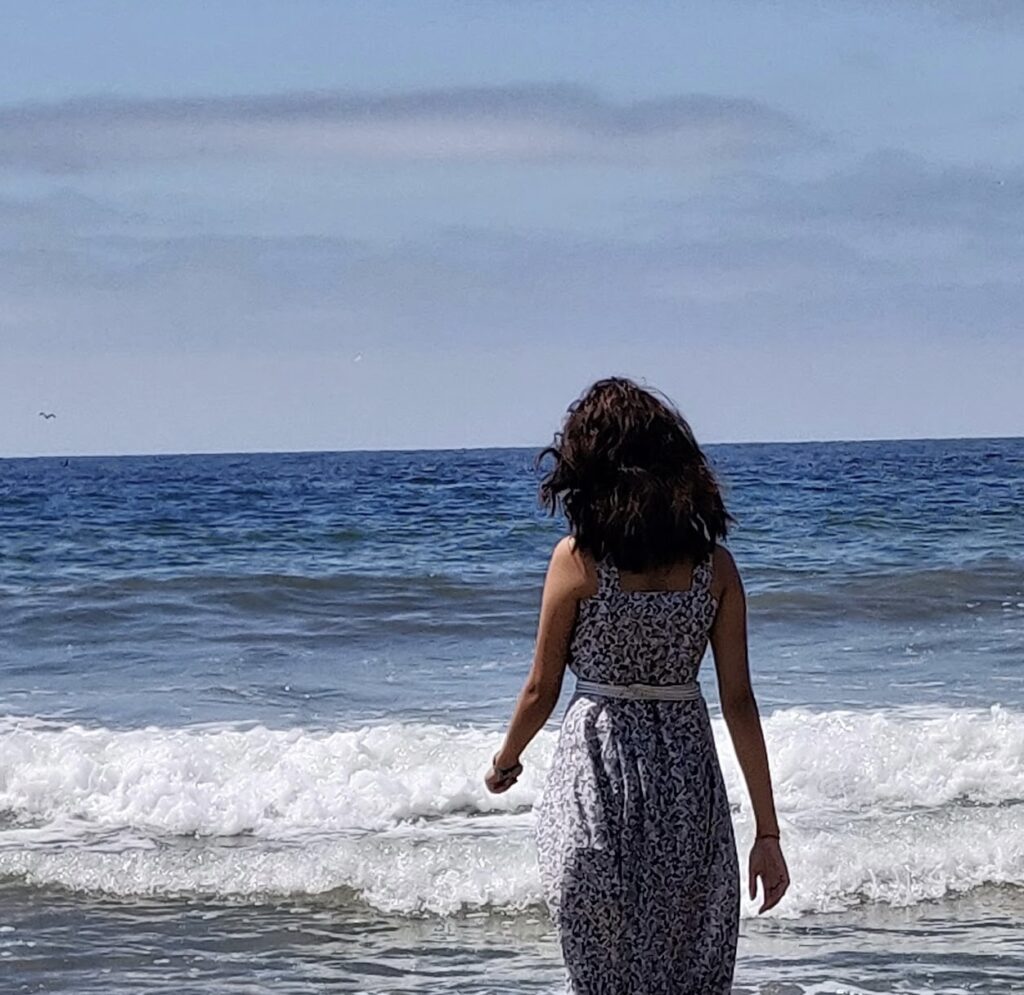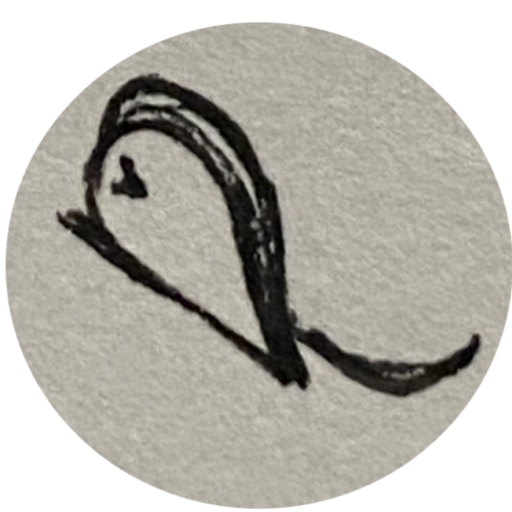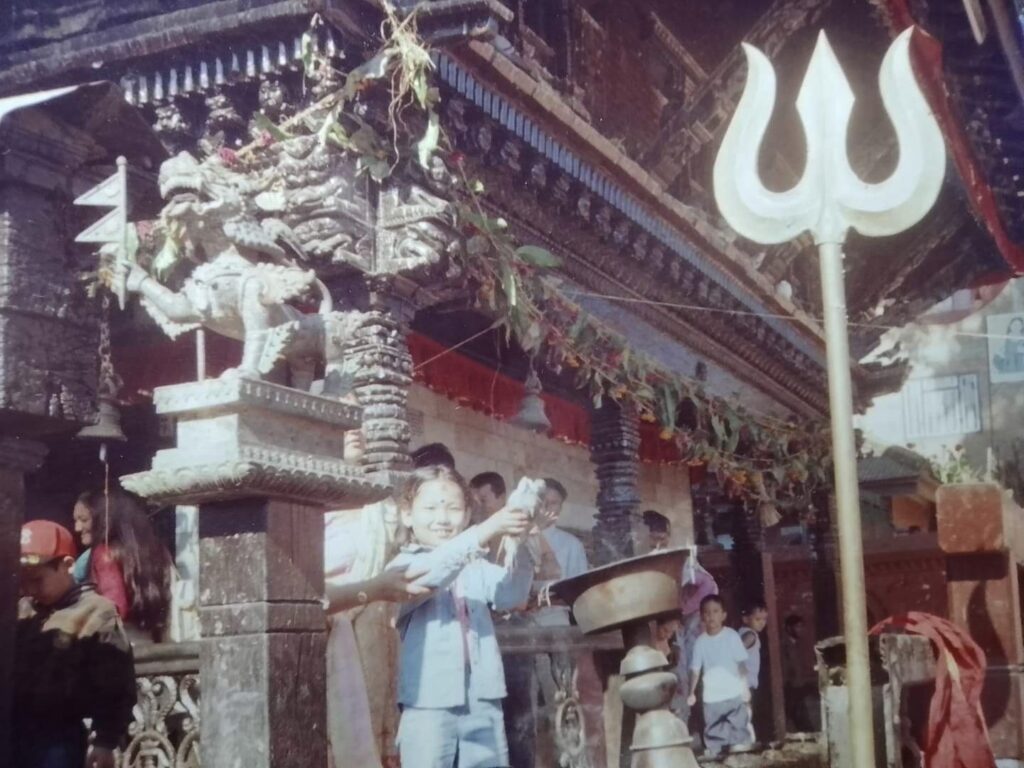About

Vegan and atheist from Nepal, Kemmy is currently based in the US for her studies. Academically, after completing her A.S. degree in Architecture in 2020, she’s been committed to learning music, English literature, and creative writing.
As a multipod with deep cares about the planet and the sentience it homes, Kemmy consistently juggles her adult musical journey with advocacies that mean the most to her. For the past two years, she has been accumulating writings on veganism, free-thinking, equity, and climate awareness. Also a psychology and cooking enthusiast, she champions mental health education and documents thrifty recipes occasionally. The blog will be the new haven for these closely-relevant writings.
{Temporary additional info: I finally in March feel somewhat ready to publicly share that I have created this website after troubleshooting through months of mind-preps, ground-works, and technical hurdles. Please bear with my pause and persistence as I concurrently take care of other areas of my life. I do have an essay for you to read until I release my writings from other categories in the blog section above. And of course, a bunch of words down below! Hope you find something you could use or look for. Happy reading :}
How I became a vegan and why
“Because each of us capable of loving and to be loved,
Tears up or bleeds when hurt.”
It was the year 2016 when I finally decided I’d pledge myself to become a vegetarian. After and despite several slip-offs, mistakes, peer pressure, mockeries, and family interrogation, I persisted with my dedication to vegetarianism until 2020…
Looking back,
The house I grew up in was, and still to some extent is, an animal husbandry locus. Both my grandmothers farmed all conventional species of animals. Almost all of my relatives at least had backyard chickens. I spent ~15 years of my life being conditioned to never consider thinking how cruel and unnecessary it is to kill another sentient individual in the name of God or taste and nutrition. I grew up watching older pigs brutally and needlessly sacrificed during the Holi festival, chickens’ and pigeons’ heads chopped off or broken with bare human hands (mostly my father’s and uncles’) during Dashain and Tihar or other special occasions. If there were no animals available or ready for the feast—although some were killed premature—we (the kids) would be sent out to buy them in kilos from butcher shops which ironically are called “Fresh House” in Nepal. Even when I wasn’t yet vegetarian, it took me a few years to grasp the idea of “fresh house,” as somehow I assumed “press house,” or “flesh house” when people uttered it.
Some of the animal memories I hold close to my heart and can’t seem to forget took place during vacations at my granny’s/mamaghar: maternal uncle’s house—however our uncle separated from the family when I was very little (which is mostly uncommon in Nepal); my granny, almost all by herself, lived in the village house taking care of our grandpa with lots of other animals. Those memories ranged from catching dragonflies and fishes to feeding our old dog Laampuxxre (“long-tailed” in English), pigs, goats, and chickens. My brother and I innocently trapped fishes in the crop fields and ponds to cook for food while thinking we loved the ones in the aquariums to keep/trap them for life in glassy bowls. My cousins and I ignorantly tied thread onto the dragonflies’ tails for summer fun. I can’t recall any adult calling us out for our idiocy. We were instructed to hit the pigs with a designated large bamboo stick and other animals with any stick-worthy thing we could find nearby if they behaved badly i.e. didn’t carry themselves as we pleased. All while we knew hitting street dogs with stones was wrong; be there a reason or not. We felt sad and enraged seeing Laampuxxre with bruises on his face from strangers hitting him outside as he grew old (all the village houses including our mamaghar had no walls, and we barely chained Laampuxxre if at all). But that did not help us to think it hurts all the same to the other animals we were taught to hit. When the veterinarian came to artificially inseminate the cow, as the little girl I was, I used to think that was a treatment procedure.
As I grew older, I realized it wasn’t in me to leave dead fish and backyard chicks without a proper burial. While having that empathy, I would still guiltfully eat their family for dinner. Later, I remember light-heartedly with a smiley face at the end of my phrase sharing my thoughts about feeling bad for the animals while eating them with my mom. And her words were along the lines of “you shouldn’t be thinking like that.” At that time, I had to decide whether I act according to my thoughts or never talk about it again because something about what I heard from my mom didn’t sit with me well. The latter felt impossible, so I went with not contributing to the cult ever again.
I was doing okay as a vegetarian; didn’t always feel the need to advocate for the plant-based. However, as a vegetarian in Nepal, my go-to movie to watch with friends or family for subtle advocacy used to be Okja every chance I got. My vegetarianism lasted four years. Then, during the first wave of quarantine in 2020, on the spur of the moment, I started feeling inevitable that I did that—speak up more and louder for the animals no matter what. I lost my job to the COVID-19 pandemic, and all the classes went online. So, I signed up for a few Coursera courses but spent way more than my free time deep-diving into veganism, reading popular and academic articles. One thing led to another. I found myself talking to my cousin-brother for hours on the phone in the middle of the night about our misalignment in how we treat and think of animals, discussing their unjustly normalized exploitation with friends and strangers on the internet. After watching videos on Instagram that showed the slaughterhouse footage, Earthling Ed’s debates on Youtube, realizing the inseparable chains between dairy, egg, and meat industries, and acknowledging the common root of all exploitation, I could not not-go vegan!
The primary reason and drive for being vegan was ethical, but it is also worth mentioning that my skin health improved shortly after that shift. I had suffered the worst Tinea infection on the large parts of my skin—front, back, and on my arms—for two years. Concurrently with being vegan, I decided to go sugar & gluten-free until my skin got better. Before that, I had been taking all forms of oral and topical medications for months to only see back-and-forth improvement and retrogression. Consistency in that diet and some downtime at home for the skin in addition to the medication must have been the heroes for the miracle that the Tinea was gone. I don’t entirely credit that to ditching dairy and egg products because I don’t have definite evidence for it. Just something to consider for any fellow skin condition endurer. I stopped being sugar-free and gluten-free after a few weeks, but of course, continued being vegan.
And that’s my little vegan story.
How I became an atheist and why
Atheists who pray(ed) – agnostics?
For most of my life, I thought the only Hindu god I resonated with and paid my respect to was Saraswati (the Hindu Goddess of “knowledge, music, art, speech, and wisdom”). The only equivalent respect I held in terms of religious acknowledgment was for the Buddha. However, one wouldn’t easily find my money or broken flowers in mandirs(temples) or any places of gods, not voluntarily, at least.
The day the above picture was taken—Dashain 2020 on the 27th of October—was the last day I chose to conform, to pray in front of conceptualized statues. However, I wasn’t thinking of God conventionally at the time either. I had been, without being aware, skeptical of religious notions for as long as I can remember—since my childhood. Since nobody could explain to me who we are worshiping, praying to, where they are, and how the purpose is relevant to the moment we’re praying. And do our hopes necessitate prayers and bowing to the statues of deities that we don’t even know exist or existed ever?
Most of us recall reading in the school books, “God is omnipresent, omnipotent, and omniscient,” but how can they save us from or listen to all our worries and problems? Is it that they don’t control nature, natural calamities, and animals but only monitor us humans. Do they just care the least about anything other than humans? Or worse— that we earn or deserve earthquakes and floods, while the non-human animals deserve death penalties over our prosperity and tastebuds? How are whoever next to me in the prayer station, praying too, able to keep their eyes shut significantly longer than me? What do they think about? And then, how do we still buy that a human-imaged God was the creator of all despite the proven scientific theories and evidence of evolution? Why was it not a mustard plant or Staphylococcus aureus instead of Brahma or the father of Jesus? How can each religion and its scripture claim different ways of creation, and the Gods co-exist with clashing historical information?
Some would argue that they do not necessarily believe in the statues or a form of God, but the general idea would still remain— to worship and please the loving God, who (entity) or whatever (divine) the God is. And they often perceive this as spirituality. Nobody knows what pleases God. It’s an immense waste of resources (food, time, and money) as devotees offer them to the statues especially in Hindu culture when we could directly be donating to the ones who actually need them. I mostly hear from people who help other people for religious reasonings and connotations, that “what you give is what you get” aka Karma! and God is the guard of your deeds. Although give-get is true to a varied extent, stretching it out like that for it to become the shining motive to help does not only take away the genuineness of helping but also becomes toxic to the helper in the long run. Sometimes helping one does not secure getting help from them back or from a different individual. It is only healthy to hope for kindness as a common decency and without expecting any form of religious favor. However, despite being hard to tell, some religious folks do have the best intentions at heart.
As if the “lions eat deers” and protein arguments weren’t already full of it, a few still believe in or conform to ritual slaughter in the name of religion. Some happen to think that “God created animals for humans.” We may blame people for misinterpretation of scriptures and not the religion entirely. However, the problem still lies in how we hold fast to the religious texts disregarding the radical evolution of civilizations. Some teachings and books may be suitable for a read but aren’t relevant enough for the people and society to continue following and dogmatizing it to the core. Long as people feel entitled and submissive to the dogma and exploit culture, it’s far a cry to arrive at a succinctly free world.
Taking away the theist attachments, we would still celebrate festivals and enjoy the company of each other. But we don’t have to believe in the primitive cause we had been told before. We would be creating our own that aligns with values of empathy and sentience that speak to the world in a justifiable manner. And we won’t yield to the school of thought that entitles us to think non-human animals and all other living creatures are here for our usage and purpose.
Nonetheless, throughout my life, there were also several times that I subtly tried to believe, thinking that’s what “good people” were supposed to do — to be religious and believe in God/s. My mother would wish for me to take a holy escort with me when moving to a country on the other side of the globe. The escort is a picture of Goddess Saraswati. I only wanted to take a little statue of a duck as her symbol at the time, but in the end, I hesitantly carried the photo in the plastic wrap (centered in the picture above). I also bought a Buddha statue in Patan, Nepal, the same year in 2018.
It was more of a fancy or ingrained view that we’d long been curbed and entrapped into and did not get a chance of knowledge to be directly questioned than an actual belief. Around 2020, I realized it wasn’t that I stopped believing in God. There was never an established belief, just the illusive social comfort and the rituals I was born into. And we merely believe what we do not know. I know this resonates with most other people. I was a skeptic at heart. All agnostics are skeptical of religion; most skeptics are determined atheists. Agnostics who still pray (to God) could just be one reading away to learn they would have been an atheist all along after all.
Just like being a vegan, I consider being an atheist an important part and identity of my life.
Veganism vs Atheism:
The connection between being vegan and skeptic
My mom and i freeing a pigeon at Manakamana temple around the year 2006
People often tie religious or spiritual knots to being vegetarian generally, or think that most vegans choose to be vegan inspired by or for their religion. For me, religion and religious slaughter were the leading reasons to question eating animals at the first place. The thought of not supporting and not participating in such cruel culture, not eating the sacrificed animals, but continuing to eat other animals for other needless reasons meant betraying the animals for whom I stood against ritual slaughter and my own conscience.
So, I argued with myself and with everyone who, I thought, needed to hear it:
अरूले त भगवानको नाममा खाए, मैले पेट भर्न, नतिजा अनि कारण त दुवै नै भए नि बलिको।
के अर्थ रह्यो? के फरक पर्यो र ती निर्धो पशुलाई?
जब वास्तवमा आवश्यकता भने दुवैकै छैन! न त पोषण नै पुर्याउन!!
Others killed and ate the animals in the name of non-existent Gods, and I to fill my stomach. In the end, both are the result and cause of the sacrifice.
What does it mean? What difference does it make to those poor animals?—They die, that’s all!
When in fact there isn’t a need to kill for either worship or food! None even for nutrition or celebration!!
It had always been about justice.
Intention
My intention with the website is to use it as a hub to share and feature my creative and professional works from across all platforms. Also, to just try and share-express this little life of mine and what I’ve learned about lives in general 🙂


